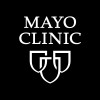
Internet-based Perioperative Exercise Program in Patients With Barrett's Carcinoma Scheduled for...
Barrett EsophagusThis study will evaluate, if an intensive individually adaptated training program via online supervision during neoadjuvant therapy will improve lung function and reduce pulmonary complications following esophagectomy for Barrett's cancer.

OCT Pilot in Esophagus
Barrett EsophagusThis is a pilot study to test a newly developed optical coherence tomography (OCT) device to determine 1) whether adequate tissue contact can be attained to acquire high quality images, and 2) to identify if these images can discern whether the imaged tissue is squamous or Barrett's Esophagus (BE) epithelium.

The Accuracy and Acceptability of Magnet Assisted Capsule Endoscopy in the Diagnosis of Esophageal...
Barrett's OesophagusOesophageal VaricesA pilot study to assess the accuracy and acceptability of a magnet assisted capsule endoscopy in detecting esophageal pathology compared to standard endoscopy.

CLE for Assessment of Neoplasia After Mucosal Ablation or Resection of Gastrointestinal Neoplasia...
Barrett SyndromeBarrett's Syndrome3 moreThis study focuses on demonstrating the value of probe-based Confocal Laser Endomicroscopy (pCLE) in guiding endoscopic therapeutic procedures in Barrett's Esophagus (BE). It is a randomized controlled outcomes study including patients already treated for Barrett's Esophagus lesion(s) and undergoing high definition white light endoscopy follow up procedure, with or without pCLE (2 arms will be considered in this study). The procedures will be carried out per standards of practice with appropriately trained physicians.

Reflux-Induced Oxidative Stress in Barrett's Esophagus: Response, Repair, and Epithelial-Mesenchymal-Transition...
Barrett's EsophagusGastroesophageal Reflux DiseaseThe purpose of this study is to elucidate mechanisms whereby oxidative stress induced by acute reflux esophagitis: 1) activates p38 to regulate proteins that control the G1/S cell cycle checkpoint, and 2) activates HIFs (hypoxia inducible factors) to cause autocrine VEGF (vascular endothelial growth factor) signaling that triggers the EMT (epithelial-mesenchymal-transition) program in Barrett's esophagus.

Evaluation of Effect of CryoBalloon Focal Ablation System on Human Esophageal Barrett's Epithelium...
Barrett's EsophagusThis is a feasibility study without a primary study hypothesis or statistical comparison.

trūFreeze® Spray Cryotherapy Patient Registry
Barrett EsophagusEsophageal Dysplasia4 moreTo collect efficacy and outcomes data related to the use of trūFreeze® spray cryotherapy for the treatment of unwanted tissue in the pulmonary and gastrointestinal settings.

The Changes of Ryodoraku and HRV After PPI Treatment in GERD Patients
Non-erosive Reflux DiseaseBarrett's EsophagusGastroesophageal reflux disease(GERD) mainly related to the reflux of stomach content induced by the dysfunction of lower esophageal sphincter. Proton pump inhibitors (PPI) can effectively block gastric acid secretion but the drug reactions and the degree of improvement in symptoms are sometimes unpredictable. The aim of this study is to investigate the association between the clinical efficacy of PPI in patients with GERD and the personal physical status by Ryodoraku and ANSWatch.

CryoSpray Ablation (TM) GI Patient Registry
Barrett's EsophagusEsophageal CancerThe purpose of this study is to create a patient registry to collect and analyze post-510K approval information on subjects treated endoscopically with the CryoSpray Ablation™ System.

Methylene Blue Chromoendoscopy in Barrett's Esophagus
Barrett EsophagusThis study is being done to: Determine if a temporary dye applied to the esophagus identifies areas of dysplasia (pre-cancer). Determine if certain dye patterns indicate specific grades of dysplasia. Determine if overall endoscopy costs can be reduced with this dye technique. Determine if the dye could allow fewer biopsies to be obtained in the future.
